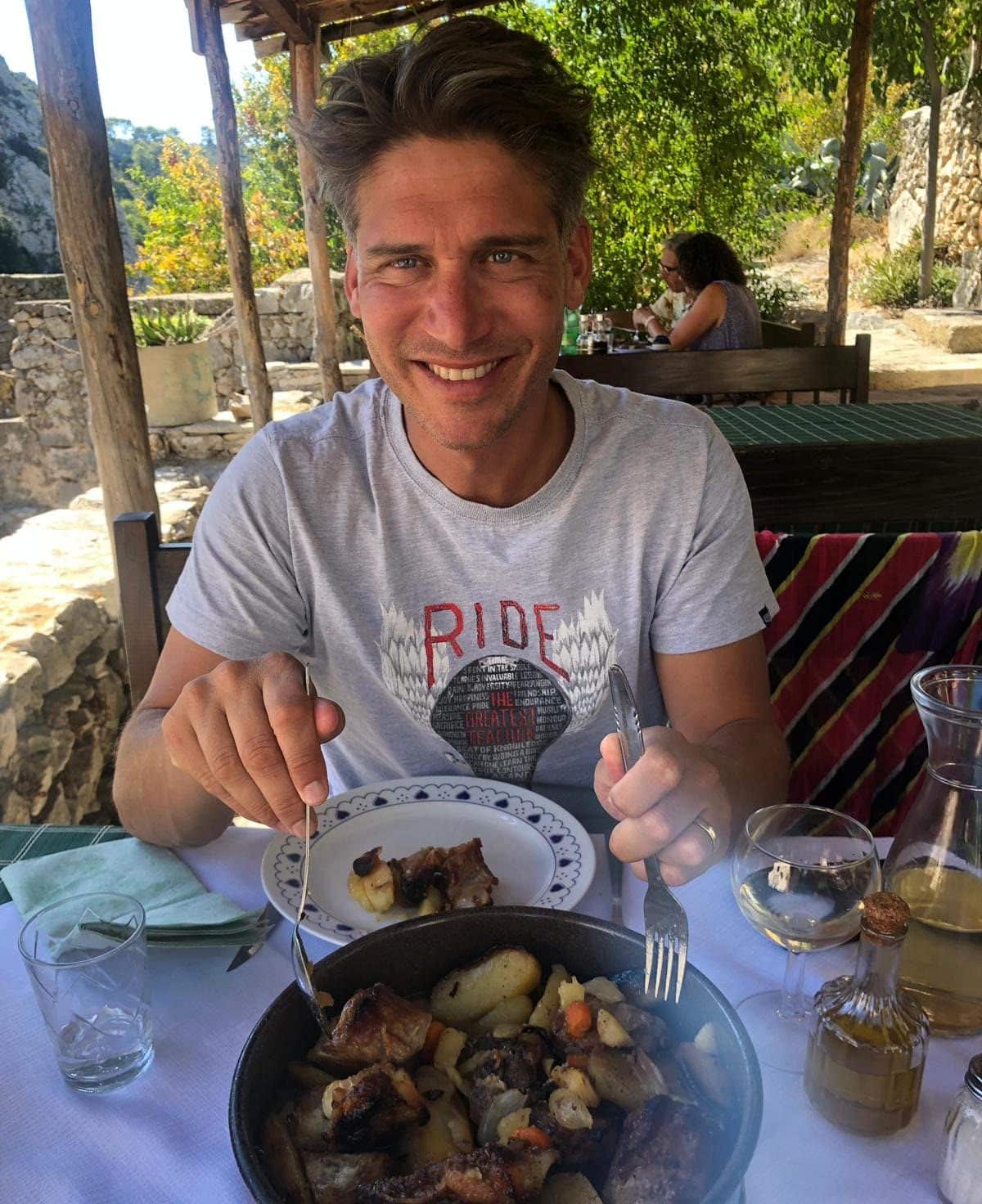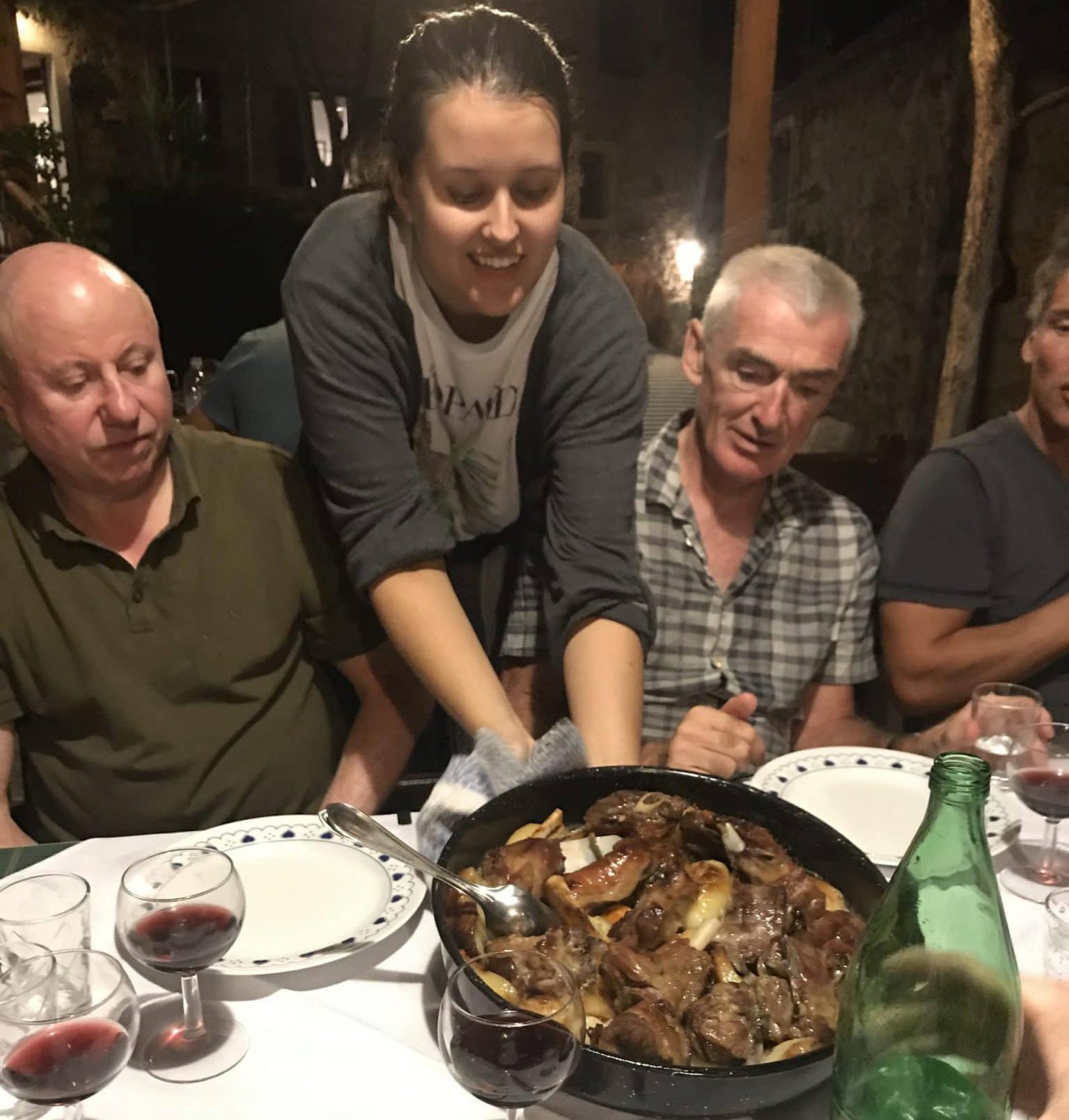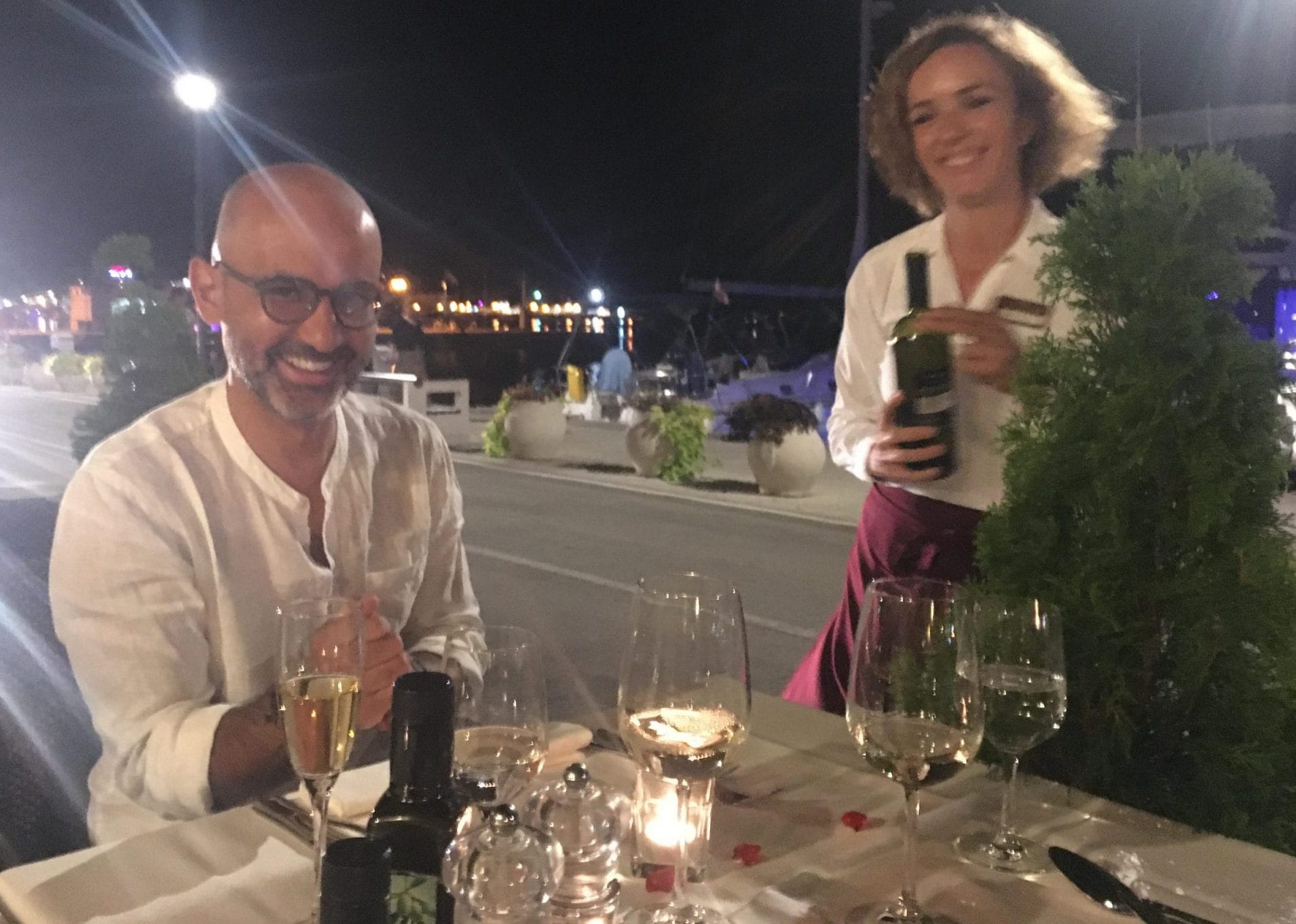Dalmatian Peka with a glass of Dingač
In this article
Join us as we delve deeper into the magic of 'peka' and uncover the secrets of this traditional Croatian cooking method.
Setting up our Epic Adventures is very much a process that evolves over the course of time.
Generally, it starts with a conversation about how cool it would be to follow in the footsteps of a particular historical figure, to then poring over maps as to the feasibility of doing it on a bike! If the idea strikes a chord, we then find ourselves conceptualising a route and then trying to join the dots between places of interest along the way. Before we know it, the trip specialists are searching out the road less travelled, visiting possible lodging options and searching out eateries that give a sense of the place we are visiting.
With our Marco Polo Cycling Tour, the process was very much assisted by the fact that our trip specialist Marcello had been running tours down the Dalmatian coast for many years and had studied in Venice over 20 years ago. The tour was very much a realisation of a personal dream to create a tour with Marco Polo at its core, and we were more than happy to make it happen. However, there was still a need to test some of his recommendations before we added them to the roster. This was the case with a family-run restaurant in an abandoned village on the island of Hvar that Marcello thought would work well on the tour. It is fair to say Dylan didn't object too strongly when asked to try it out when on a family holiday in Hvar!

The test run was a resounding success, and everything about the experience fitted with our desire to sample local fare and get a sense of place through doing so. Our host and chef, Berti, took the time to introduce us to his family and explained how he ended up running a biodynamic restaurant specialising in 'peka' in an abandoned village on the island of Hvar. It was clear that this dining experience had all the 'ingredients' to be added to the list of culinary highlights across the tours we run, and our visit there in September proved that to be the case. The meat and seafood peka dishes served up were sublime, and so we thought we thought we'd give you more of an insight into what 'peka' actually was.

The peka is a traditional dish from the Dalmatian region of Croatia. It’s a relatively simple dish of meat and vegetables, placed in a large pot or pan with a metal lid called a cripnja, and cooked for several hours in the embers of a fire. Much of Croatian cuisine celebrates cooking over the fire, with its grills and skewers, and the peka is part of this great tradition. What appears to be a fairly rudimentary cooking method produces the most succulent results, and over the generations, the process has taken on its own ritual, with many older homes having a specific place where the peka is prepared. It is often served when there are guests in the house, and restaurants in the area will typically have several versions on the menu, with different choices of meat and fish.
The Peka recipe
- Light the fire at least an hour before starting to cook, and place the cooking pot near the fire to warm.
- Cut the meat or fish into large pieces and place in the pot. Lamb and veal are often used, as is fish and octopus.
- Cut the potatoes and any vegetables you wish to use into large pieces and nestle them in the pot along with the meat.
- Season with olive oil, salt, pepper and a little paprika.
- When you have plenty of embers in the fireplace, move them to one side using your fireside shovel, and place the peka pan directly onto the hot stone, making sure the lid is securely fitted.
- Then shovel the embers over the top of the pot and cook until the potatoes are golden and the meat tender and juicy, which will take an hour for fish dishes, and longer for tougher cuts of meat.
The right amount of seasoning and perfect cooking time comes with experience, like so many things in life!
As is often the case, the best accompaniment to a dish that is very much a part of its local culture is a local wine. Here are a few of Croatia’s most fabulous reds and whites. We were very lucky to have our newly qualified sommelier Marcello on the tour to manage the wine kitty :)

Dingač is known as the ‘King of Croatian wines’. The Dingač region is on the Pelješac Peninsula in the Dalmatian region and was the first wine-producing area in Croatia to become a protected zone in 1965. The Plavac mali grape, which grows on its steep southern slopes, creates a wine that is dark red, full-bodied and generally strong, typically with an alcohol content of 15%.
Pošip is a robust white wine, golden in colour, and a great accompaniment to fish Peka, including the fabulous octopus peka. The grape is grown mostly on the island of Korčula, and also goes well with the light cheeses produced in the area.
Plavac mali is a ruby red, rich and velvety wine. Its excellent quality has made it one of Croatia’s most exported wines, and a popular choice to pair with game and meat dishes.
Faros is another top-quality wine produced from the Plavac mali grape. The grapes used to create this dry red are grown on the island of Hvar, the variety having been originally cultivated in the area by the ancient Greeks.
Bogdanuša is a variety also grown almost exclusively on the island of Hvar, producing a dry, greenish-yellow white wine. It has a fresh taste, with fans detecting the presence of the lavender that grows alongside it on the Stari Grad Plain.
Prošek is a sweet dessert wine produced in the south of Croatia, predominantly in Dalmatia. Because of its production method that requires seven times more grapes than other wines, only a few hundred litres are made each year, making good quality versions more expensive. In Croatia, it often makes an appearance on special occasions such as weddings and christenings, but don’t fall into the trap of confusing it with Italian Prosecco!
Get in touch if you are looking to immerse yourself in your next journey of discovery, or take a look at our complete list of Epic Tours.